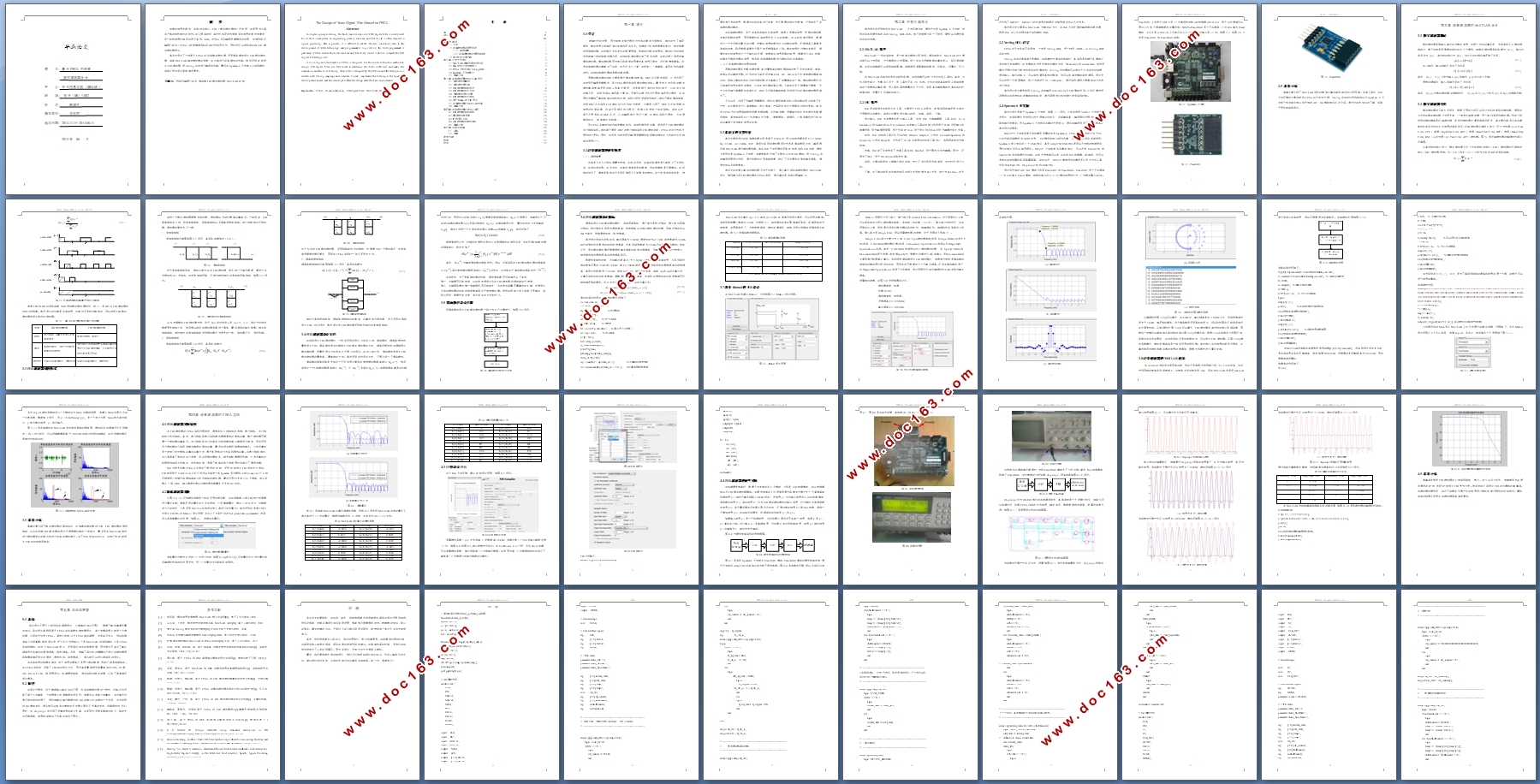基于FPGA的语音数字滤波器设计

1.无需注册登录,支付后按照提示操作即可获取该资料.
2.资料以网页介绍的为准,下载后不会有水印.资料仅供学习参考之用.
密 惠 保
基于FPGA的语音数字滤波器设计(任务书,开题报告,外文翻译,论文12000字)
摘要
在数字信号处理中,有限冲击响应(FIR)数字滤波器被广泛使用,这是因为它具有严格的线性相位的特性。在工程实践中,实时性和灵活性常常会在信号处理中被要求,而一般很难同时满足这两个条件。EDA技术以及可编程逻辑器件的发展,使得现场可编程门阵列(FPGA)能够兼顾系统的实时性和灵活性,同时也可以很好地完成FIR数字滤波器设计。
本论文设计了一种基于FPGA的语音数字滤波器,采用窗函数法设计FIR数字滤波器,借助MATLAB确定滤波器的系数,并对其进行语音滤波的仿真。然后采用IP核设计FIR滤波器,用Verilog语言进行编写并仿真。最后在Spartan 6开发板上上实现滤波,实验证明该设计基本满足要求。
关键字:现场可编程门阵列 窗函数FIR数字滤波器 MATLAB IP核
The Design of Voice Digital Filter based on FPGA
Abstract
In digital signal processing, the finite impulse response (FIR) digital filter is widely used for its strict linear phase. In engineering practice, real-time and flexibility is often required in signal processing. But in general, it is difficult to satisfy the two conditions. Due to the development of EDA technology and programmable logic device, the field programmable gate array (FPGA) ensure the both real-time and flexibility. And it is able to complete the FIR digital filter design well.
A voice digital filter based on FPGA is designed. Use the window function method to design FIR digital filter, use MATLAB to determine the filter coefficient and make the simulation and the voice filtering. Then filter is designed by the IP Core and the description is written with Verilog language and simulate. Finally, implement the filtering in the Spartan 6 development board, and the results prove that the design meet the basic requirements.
Keywords:FPGA ; Window function ; FIR digital filter;MATLAB; IP Core

目录
摘要 I
Abstract II
目 录 III
第一章 绪论 1
1.1引言 1
1.2语音滤波器的研究现状 1
1.2.1课题背景 1
1.2.2语音滤波器的发展和趋势 2
1.3本论文的主要内容 2
第二章 开发平台简介 3
2.1 MATLAB 数值仿真软件介绍 3
2.2 ISE 软件开发环境简介 3
2.3 FPGA开发语言与Verilog HDL 4
2.4 Spartan 6开发板简介 4
2.5 本章小结 6
第三章 语音滤波器的MATLAB设计 7
3.1 数字滤波器概述 7 [版权所有:http://think58.com]
3.2 数字滤波器分类 7
3.3 FIR滤波器结构形式 8
3.3 FIR滤波器设计方法 10
3.4 窗函数法设计步骤 11
3.5 FIR滤波器设计指标 12
3.6基于fdatool的FIR设计 13
3.7语音滤波器的MATLAB仿真 16
3.8 本章小结 19
第四章 语音滤波器的FPGA实现 20
4.1 FIR滤波器实现结构 20
4.2量化滤波器系数 20
4.3 IP核设计FIR 22
4.4 FIR滤波器的硬件实现 24
4.5 本章小结 29
第五章 总结与展望 30
5.1 总结 30
5.2 展望 30
参考文献 31
致谢 32
附录 33 [资料来源:http://THINK58.com]
